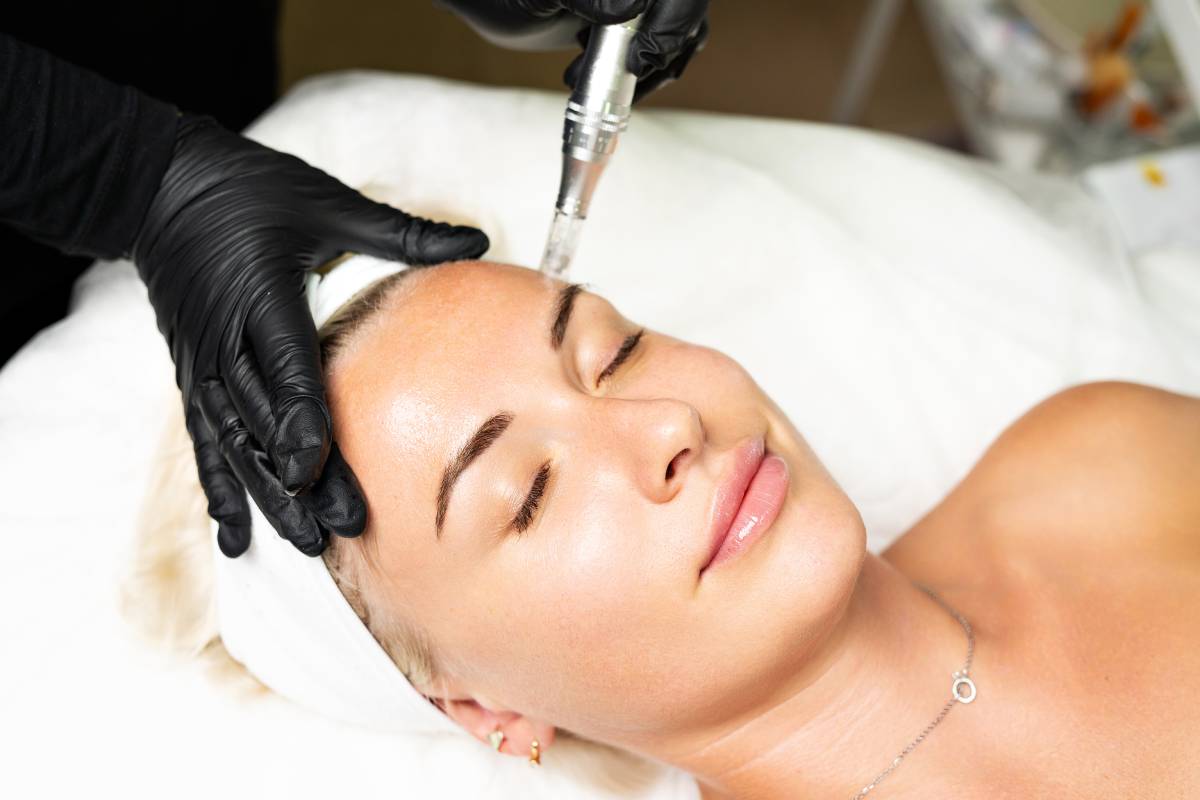Microneedling has been trending everywhere, with social media influencers and celebrities showcasing their glowing skin. However, behind the buzz, a serious question arises: Is this treatment safe for everyone, regardless of their skin type? The answer is not a simple yes or no; it requires the guidance of a specialist in oculofacial plastic surgery to determine if you have the right skin type for microneedling. Although generally, professional microneedling is considered safe.
The Basics of Microneedling
Microneedling is precisely as it sounds: tiny needles create controlled micro-injuries on the skin. This damage triggers the body’s process to repair itself. The repair process stimulates the production of collagen and elastin, resulting in a firmer, smoother appearance over time. Individuals seek out the treatment to help with fine lines, acne scars, uneven texture, or even dullness that doesn’t respond to expensive serums. Microneedling provides noticeable results without the weeks of downtime associated with more invasive procedures.
General Safety
On a broad level, microneedling is considered a safe procedure. The devices used in professional microneedling are FDA-approved, allowing for precise control of needle depth. A controlled environment matters since it reduces infection risks and ensures consistent results. At-home rollers sold online or at the drugstore lack the sterilization and depth of control you get at a medical practice. These inconsistencies can lead to uneven punctures, irritation, and scarring. If you are considering microneedling, it is best left to the professionals.
Different Skin Types
The skin’s reaction to microneedling won’t be the same across the board. Microneedling can manifest in various ways, depending on the skin type. This is one reason professional care matters. A surgeon will evaluate your skin type and make a determination based on your overall health and history.
- Fair to medium tones: Typically see smooth results with low risk of complications.
- Darker tones: Microneedling carries a lower risk of triggering hyperpigmentation compared to some laser treatments. Improper technique or post-care can raise the risk of dark spots.
- Sensitive or thin skin: Your specialist may recommend gentler settings or fewer sessions to avoid irritation.
- Active acne or skin infections: In cases where active acne or skin infections are present, microneedling is considered unsafe. This is because it can spread the bacteria and worsen the problem.
Side Effects
Side effects are a risk, regardless of how skilled your surgeon is. Most patients experience redness, slight swelling, and maybe pinpoint bleeding right after treatment. These effects fade within a day or two. Some describe it as looking like a mild sunburn. More serious but rare risks include infection, scarring, or post-inflammatory hyperpigmentation. This is why professional care is key.
Who Should Avoid Microneedling
Microneedling may be ill-advised for individuals if they:
- Have active skin infections, cold sores, or open wounds.
- Are taking certain medications, such as blood thinners.
- Struggle with uncontrolled skin conditions.
- Have a history of poor wound healing or scarring.
Keeping It Safe
If you are considering microneedling, safety starts before the first needle touches your skin. Choose a clinic where providers are adequately trained and skilled to perform microneedling. Follow all pre- and post-operative care instructions carefully. Avoid harsh products, keep out of direct sunlight, and use gentle cleansers.
Microneedling is generally safe for most skin types, but not all. This treatment can soften scars, smooth wrinkles, and restore a healthy glow, but the right hands must perform it under the right conditions. Professional microneedling, under the care of a qualified provider, gives you the best chance of achieving safe and effective results.
CTA: Discover if microneedling is suitable for your skin. Contact a microneedling professional.
Reference:
Cleveland Clinic. (2022). Microneedling.
